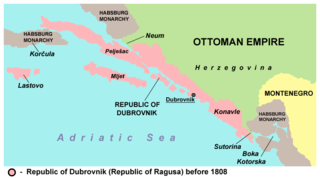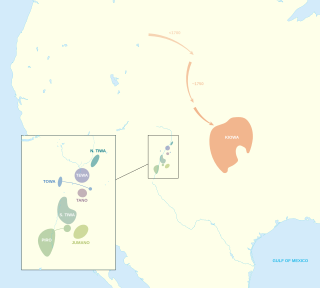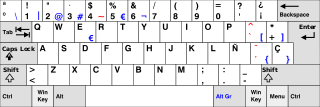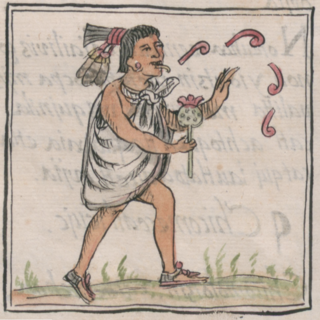
Spanish or Castilian (castellano) is a Romance language of the Indo-European language family that evolved from the Vulgar Latin spoken on the Iberian Peninsula of Europe. Today, it is a global language with about 500 million native speakers, mainly in the Americas and Spain, and about 600 million when including second language speakers. Spanish is the official language of 20 countries, as well as one of the six official languages of the United Nations. Spanish is the world's second-most spoken native language after Mandarin Chinese; the world's fourth-most spoken language overall after English, Mandarin Chinese, and Hindustani (Hindi-Urdu); and the world's most widely spoken Romance language. The country with the largest population of native speakers is Mexico.

Dalmatian or Dalmatic was a group of Romance varieties that developed along the coast of Dalmatia. Over the centuries they were increasingly influenced, and then supplanted, by Croatian and Venetian.
The Nubian languages are a group of related languages spoken by the Nubians. In the past, Nubian languages were spoken throughout much of Sudan, but as a result of Arabization they are today mostly limited to the Nile Valley between Aswan and Al Dabbah. In the 1956 Census of Sudan there were 167,831 speakers of Nubian languages. Nubian is not to be confused with the various Nuba languages spoken in villages in the Nuba mountains and Darfur.

Chavacano or Chabacano is a group of Spanish-based creole language varieties spoken in the Philippines. The variety spoken in Zamboanga City, located in the southern Philippine island group of Mindanao, has the highest concentration of speakers. Other currently existing varieties are found in Cavite City and Ternate, located in the Cavite province on the island of Luzon. Chavacano is the only Spanish-based creole in Asia. The 2020 Census of Population and Housing counted 106,000 households generally speaking Chavacano.

Tanoan, also Kiowa–Tanoan or Tanoan–Kiowa, is a family of languages spoken by indigenous peoples in present-day New Mexico, Kansas, Oklahoma, and Texas.

The Misumalpan languages are a small family of languages spoken by indigenous peoples on the east coast of Nicaragua and nearby areas. The name "Misumalpan" was devised by John Alden Mason and is composed of syllables from the names of the family's three members Miskito, Sumo languages and Matagalpan. It was first recognized by Walter Lehmann in 1920. While all the languages of the Matagalpan branch are now extinct, the Miskito and Sumu languages are alive and well: Miskito has almost 200,000 speakers and serves as a second language for speakers of other indigenous languages in the Mosquito Coast. According to Hale, most speakers of Sumu also speak Miskito.

El Salvador, officially the City of El Salvador, is a 6th class component city in the province of Misamis Oriental, Philippines. According to the 2020 census, it has a population of 58,771 people.
Hill Mari or Western Mari is a Uralic language closely related to Northwestern Mari and Meadow Mari, in which Hill Mari forms a Western Mari group with the former. Hill Mari is spoken in the Gornomariysky, Yurinsky and Kilemarsky districts of Mari El, Russia. It is written using the Hill Mari Cyrillic script and is co-official with Russian as well as Meadow Mari in the Mari El Republic.

The majority of languages of Spain belong to the Romance language family, of which Spanish is the only one with official status in the whole country. Others, including Catalan/Valencian and Galician, enjoy official status in their respective autonomous regions, similar to Basque in the northeast of the country. A number of other languages and dialects belonging to the Romance continuum exist in Spain, such as Aragonese, Asturian, Fala and Aranese Occitan.
Of the languages spoken in Texas none has been designated the official language. As of 2020, 64.9 % of residents spoke only English at home, while 28.8% spoke Spanish at home. Throughout the history of Texas, English and Spanish have at one time or another been the primary dominant language used by government officials, with German recognized as a minority language from statehood until the first world war. Prior to European colonization, several indigenous languages were spoken in what is now Texas, including Caddoan, Na-Dené and Uto-Aztecan languages.

The Cora are an indigenous ethnic group of North Western Mexico which live in the municipality El Nayar, Rosamorada, Ruiz, Tepic, in the Mexican state of Nayarit, Mezquital in Durango and in a few settlements in the neighboring state of Jalisco. They call themselves náayerite, whence the name of the present day Mexican state of Nayarit. They reside within a series of comunidades indígenas and ejidos. The 2000 Mexican census reported that there were 24,390 people who were members of Cora-speaking households, these being defined as households where at least one parent or elder claims to speak the Cora language. Of these 24 thousand, 67 percent (16,357) were reported to speak Cora, 17 percent were nonspeakers, and the remaining 16 percent were unspecified with regard to their language.

Spanish is the language that is predominantly understood and spoken as a first or second language by nearly all of the population of Argentina. According to the latest estimations, the population is currently greater than 45 million.

Spanish is the de facto official and administrative language of Chile. It is spoken by 99.3% of the population in the form of Chilean Spanish, as well as Andean Spanish. Spanish in Chile is also referred to as "castellano". Although an officially recognized Hispanic language does not exist at the governmental level, the Constitution itself, as well as all official documents, are written in this language.

The national language and official language of Bangladesh is Bangla according to the third article of the Constitution of Bangladesh. Almost 99% of Bangladeshis speak Bengali as their first language. Bengali Language Implementation Act, 1987 made it mandatory to use Bengali in all government affairs except in the cases of foreign relations. According to a 2022 census, Bengali is predominantly spoken by 99% of the country's population and it also serves as the national language of the nation. The indigenous people of northern and southeastern Bangladesh speak a variety of native languages. According to the Ethnologue, there are 36 indigenous living languages, which include 17 Tibeto-Burman, 10 Indo-Aryan, 7 Austroasiatic and 2 Dravidian languages in Bangladesh. Bangladesh has 44 indigenous languages according to Professor Shameem Reza.

Bechamoun, is a town near Beirut in the Mount Lebanon Governorate of Lebanon. It has an area about 6.6 square kilometres and elevation between 60 and 580 metres above sea level. It lies 8 kilometres from Beirut’s airport and central Beirut. The town has a population of greater than 15,000.

The Jirajaran languages are group of extinct languages once spoken in western Venezuela in the regions of Falcón and Lara. All of the Jirajaran languages appear to have become extinct in the early 20th century.

Nahuatl, Aztec, or Mexicano is a language or, by some definitions, a group of languages of the Uto-Aztecan language family. Varieties of Nahuatl are spoken by about 1.7 million Nahua peoples, most of whom live mainly in Central Mexico and have smaller populations in the United States.
The Hill Nubian languages, also called Kordofan Nubian, are a dialect continuum of Nubian languages spoken by the Hill Nubians in the northern Nuba Mountains of Sudan.
Karko is a Hill Nubian language spoken in the northwestern Nuba Mountains in the south of Sudan. It is spoken by around 7,000 people in the Karko hills, 35 km west of Dilling, including Dulman, although Jakobi Angelika & Hamdan Ahma estimate the Karko population at up to 15,000 individuals, mostly in urban centers. Ethnologue reports that speakers of Karko are shifting to Sudanese Arabic.
Haraza is an extinct Hill Nubian language known only from a few dozen words recalled by village elders in 1923. It was spoken in the Jebel Haraza near Hamrat el-Wuz.














